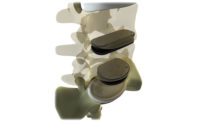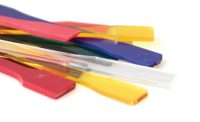When we create products for the natural world, engineers and heat treaters tend to focus on making components that are stiff, strong and resistant to applied forces. Nature, on the other hand, chooses a different path, opting in general for objects that are highly flexible. To resolve the apparent conflict between the two requires an understanding of material science. Let’s learn more.
Materials Science
Materials science can be thought of as the science and technology of materials (Fig. 1). The central theory behind materials science involves relating the microstructure of a material to its macromolecular physical and chemical properties. By understanding and then changing the microstructure, materials scientists tailor the properties of a material to create custom or even brand-new materials with specific properties for specific uses.
Stress and Strain
When we think about a solid object, we often assume it is perfectly rigid. While we know it is made up of atoms, we don’t think of it as moving or stretching. All solid objects have a measureable stretch, however, especially if one thinks about elastic deformation, which is the ability of an object to return to its original form once a force has been applied to it.
Of critical importance is the force per unit area over which it acts, not the force applied to an object. We call this stress. If we wish to quantify how much an object will stretch, we divide the length that the object stretched by the original length and call this strain (aka fractional elongation).
Stress–Strain Curves
Using a stress-strain curve (Fig. 2) for a given material, we can determine how much force we can exert on an object before it breaks (i.e., the maximum stress it can withstand). We call this the strength (aka ultimate tensile strength) of a material. On the other hand, if we are interested in knowing how far we can stretch a material, we talk about the maximum strain it can withstand. In the world of nature, we call this the extensibility of a material.
When we exert force on a material and it returns back to its original shape and size, we say that the material is elastic or exhibits elastic deformation. In nature, we call this the extensibility of use. If the force we apply is too great, the material deforms permanently, and we say that it has exhibited plastic deformation. The yield strength (aka proof strength) is that point at which we have exceeded the elastic limit; the material has exceeded its ability to return to its original shape. Furthermore, when one talks about the elastic limit it is common to talk about the 0.2% offset yield strength – the amount of stress that will result in a plastic strain of 0.2%.
We are often interested in the ratio of yield strength to tensile strength in a material as an indication of the effectiveness of a given hardening operation for steels. In general, the greater the percentage of martensite achieved, the higher the ratio will be. Conversely, the greater the percentage of non-martensitic transformation products resulting from the hardening operation, the lower the ratio will be. Use of this ratio is a function of the steel type, the hardening and tempering recipes and the equipment selected to do the job. It is best considered in conjunction with empirical (historical) data and is a useful warning signal if the ratio is in variance with what would normally be expected. Hardness and microstructure checks should then be instituted to determine if some aspect of the desired metallurgy is not being achieved.
Finally, the “classic” appearance of stress-strain curves for steels is much different for other materials. For example, the tendons in our bodies have a stress-strain curve that is concave downward with a great deal of area underneath it, whereas blood vessel arterial ways are concave upward with a relatively small area underneath. We know that tendons (or sinew) are a tough band of fibrous connective tissue usually connecting muscle to bone and must be capable of withstanding a significant amount of applied tension. By contrast, arteries must be extremely flexible – being essentially elastic tubes with muscular walls that expand and contract to pump blood through the body.[2]
Other Material Properties
In the world of engineering, we talk about Young’s Modulus of Elasticity (i.e., the slope of the curve usually in the elastic region). A material with a high value is stiffer than a material with a low value. Since high-stiffness materials are subject to smaller elastic deformations for a given amount of load, it follows that a high value is desired for a material such as a beam that spans long distances. In nature, we often refer to Young’s Modulus as the stiffness of a material (i.e., resistance to elastic deformation or the stress required to produce a given amount of elastic strain), or a measure of how much pull (stress) it takes to produce a given stretch (strain).
The energy per unit volume required to exert a force per unit area on a material is a measure of the material’s toughness. Toughness is a fundamental material property measuring the ability of a material to absorb energy and withstand shock up to fracture (i.e., the ability to absorb energy in the plastic range). In other words, toughness is the amount of energy per unit volume that a material can absorb before rupturing and is represented by the area under the (tensile) stress-strain curve. In service, this loading often occurs in the form of (sudden) impact. In nature, toughness is often referred to as the work of extension.
Resilience is the ability of a material to absorb energy when it is deformed elastically and release that energy upon unloading. The modulus of resilience is defined as the maximum energy that can be absorbed per unit volume without creating a permanent distortion. A rubber band is a good example, where the work done as you stretch it comes back out of it when released. On the stress-strain curve this represents both the work performed during release divided by the work done in the stretch.[2]
Flexibility (bending without breaking) of a material comes to the fore in applications involving impact or resistance to external forces (e.g., wind or waves). It is important to remember that while strength is often of overriding concern, flexibility cannot be overlooked. However, flexibility can do more than improve toughness and impact resistance. It provides a means for a component part to adapt when loaded in a particular manner. Think about how the elements (wind, rain) cause a flag to tatter and tear, but a leaf better resists those same elements.
Other noteworthy mechanical properties of interest are hardness, brittleness, plasticity, malleability, ductility, (compressive and tensile) strength, durability and stability.
Summary
Heat-treat engineers and heat treaters alike must take into consideration all of these fundamental material properties when designing a product and planning how to optimize its heat-treatment response. Common sense and nature itself play a role in helping us visualize these tasks.
References
- Mechanical Properties of Materials, Lesson 14 Course Notes, University of Texas Arlington, KINE 3301, Biomechanics of Human Movement
- Vogel, Steven, Cats’ Paws and Catapults: Mechanical Worlds of Nature and People, W.W. Norton Company, 1998
- American Chemical Society (www.acs.org)
- Technical Tidbits, Materion Brush Performance Alloys, Nov. 2012
- Wikipedia (en.wikipedia.org)




